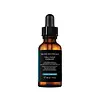What's inside
What's inside
 Key Ingredients
Key Ingredients

 Benefits
Benefits

 Concerns
Concerns

 Ingredients Side-by-side
Ingredients Side-by-side

Water
Skin ConditioningTalc
AbrasiveIllite
AbrasiveGlyceryl Stearate
EmollientPEG-100 Stearate
Isopropyl Palmitate
EmollientMyreth-3 Myristate
EmollientStearic Acid
CleansingPalmitic Acid
EmollientDiethylhexylcyclohexane
EmollientPropanediol
SolventAloe Barbadensis Leaf Juice
Skin ConditioningRosa Damascena Flower Water
MaskingCitrus Limon Peel Oil
MaskingCitrus Aurantium Bergamia Fruit Oil
MaskingAlgae Extract
EmollientLavandula Angustifolia Oil
MaskingCupressus Sempervirens Oil
MaskingGlycyrrhetinic Acid
Skin ConditioningButylene Glycol
HumectantSodium PCA
HumectantCaprylyl Glycol
EmollientHectorite
AbsorbentParfum
MaskingHexylene Glycol
EmulsifyingSodium Hydroxide
BufferingCaffeine
Skin ConditioningTetrasodium EDTA
Phenoxyethanol
PreservativeLimonene
PerfumingLinalool
PerfumingBenzyl Salicylate
PerfumingHydroxycitronellal
PerfumingButylphenyl Methylpropional
PerfumingHexyl Cinnamal
PerfumingHydroxyisohexyl 3-Cyclohexene Carboxaldehyde
MaskingCI 77891
Cosmetic ColorantWater, Talc, Illite, Glyceryl Stearate, PEG-100 Stearate, Isopropyl Palmitate, Myreth-3 Myristate, Stearic Acid, Palmitic Acid, Diethylhexylcyclohexane, Propanediol, Aloe Barbadensis Leaf Juice, Rosa Damascena Flower Water, Citrus Limon Peel Oil, Citrus Aurantium Bergamia Fruit Oil, Algae Extract, Lavandula Angustifolia Oil, Cupressus Sempervirens Oil, Glycyrrhetinic Acid, Butylene Glycol, Sodium PCA, Caprylyl Glycol, Hectorite, Parfum, Hexylene Glycol, Sodium Hydroxide, Caffeine, Tetrasodium EDTA, Phenoxyethanol, Limonene, Linalool, Benzyl Salicylate, Hydroxycitronellal, Butylphenyl Methylpropional, Hexyl Cinnamal, Hydroxyisohexyl 3-Cyclohexene Carboxaldehyde, CI 77891
Ingredients Explained
These ingredients are found in both products.
Ingredients higher up in an ingredient list are typically present in a larger amount.
Caprylyl Glycol is a humectant and emollient, meaning it attracts and preserves moisture.
It is a common ingredient in many products, especially those designed to hydrate skin. The primary benefits are retaining moisture, skin softening, and promoting a healthy skin barrier.
Though Caprylyl Glycol is an alcohol derived from fatty acids, it is not the kind that can dry out skin.
This ingredient is also used as a preservative to extend the life of products. It has slight antimicrobial properties.
Learn more about Caprylyl GlycolSodium Hydroxide is also known as lye or caustic soda. It is used to adjust the pH of products; many ingredients require a specific pH to be effective.
In small amounts, sodium hydroxide is considered safe to use. However, large amounts may cause chemical burns due to its high alkaline.
Your skin has a natural pH and acid mantle. This acid mantle helps prevent harmful bacteria from breaking through. The acid mantle also helps keep your skin hydrated.
"Alkaline" refers to a high pH level. A low pH level would be considered acidic.
Learn more about Sodium HydroxideWater. It's the most common cosmetic ingredient of all. You'll usually see it at the top of ingredient lists, meaning that it makes up the largest part of the product.
So why is it so popular? Water most often acts as a solvent - this means that it helps dissolve other ingredients into the formulation.
You'll also recognize water as that liquid we all need to stay alive. If you see this, drink a glass of water. Stay hydrated!
Learn more about Water